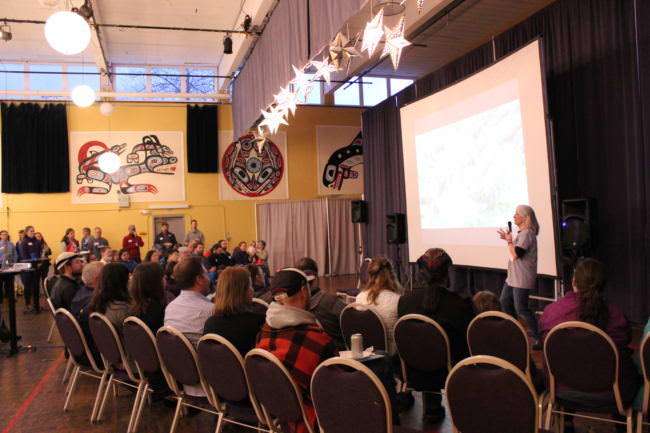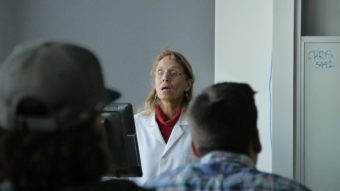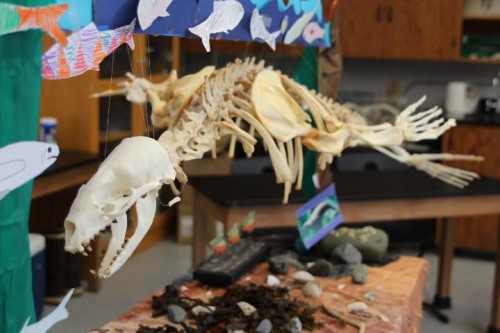
Holding the attention of tomorrow’s scientists and engineers can be tricky. Fortunately, Juneau is rife with professionals who work in those fields every day.
A group of local STEM — or science, technology, engineering and math — advocates is working on a database to make it easy for teachers to connect bookwork with real world work and find those professionals.
“From mining expertise and engineering, kind of geology, we have the glacial, we have University of Alaska Southeast, University of Alaska Fairbanks has fisheries here, we have NOAA fisheries, we have all the state organizations,” said Jordan Watson, a fisheries scientist at National Oceanic and Atmospheric Administration, or NOAA. “We have so many different expertise here and in such a small town, it would seem a shame to not be using it in the classrooms.”
He and other members of SouthEast Exchange, or SEE, wanted to find a way to bring all of those resources to teachers. They hosted a networking event recently to help bridge that gap.
About 150 educators and STEM professionals came to network and register in SEE’s directory.
The goal is to create a database where teachers can search a topic such as “glaciers” or “bridge building” and immediately find contact info for someone local with expertise in that field.
For science and math educators, the opportunity to bring a professional into the classroom is not just a respite from the daily grind of teaching.
Carol May used to be an engineer, but found herself drawn to education.
Now she’s an statistics and computer science teacher at Thunder Mountain High School.
“I can tell the kids, yeah, when I was an engineer I did this, but that was a long time ago and it doesn’t have the same credibility as somebody who’s actually doing it day to day,” May said.
Brenda Taylor is one of the co-chairs of the Juneau STEM Coalition and teaches math at Juneau Community Charter School.
She said the kind of professionals they want to join their community aren’t just scientists and engineers, but photographers, artists and members of the Native community.
“The thing I think is really wonderful when you say STEM is you’re thinking about the discipline of how do you look at the world and how do you ask questions and how do you think about it?” Taylor said. “Here are all these different people who look at the world in all these different ways, right? As a piece of that as well is Alaska Natives who are looking at the world not only in terms of what they see right now, but all of their stories and tradition that they have inherited and that are their ancestors kind of talking through them. So how have people been understanding and making sense of this specific world here for 10,000 years?”
Thunder Mountain High School already hosts one very successful STEM collaboration.
About eight years ago, UAF professor Shannon Atkinson approached the school administration about creating a partnership between the campus and school.

It led to juniors and seniors rearticulating a marine mammal skeleton in class each semester. They learned about anatomy, ecology and environmental stewardship along the way.
Thunder Mountain marine sciences teacher Kristen Wells said somewhere between 300 and 400 students have taken the class to date, earning both high school and college credit.
“It’s a beautiful pairing that they actually get to work on a marine mammal,” Wells said. “There’s marine policies that don’t allow us that access, so it’s incredible that we actually get that access through this partnership and the kids really value that.”
The program has expanded to include field trips to NOAA’s labs, Berners Bay and cultural bearers from the Tlingit community.
They’ve also done similar classes at Yaaḵoosgé Daakahídi Alternative High School and Mount Edgecumbe High School in Sitka.

By the end of the coalition’s networking event, 80 teachers and 63 community members had registered in SEE’s directory, paving the way for more dissections and skeletal articulations to come.
